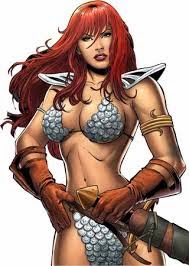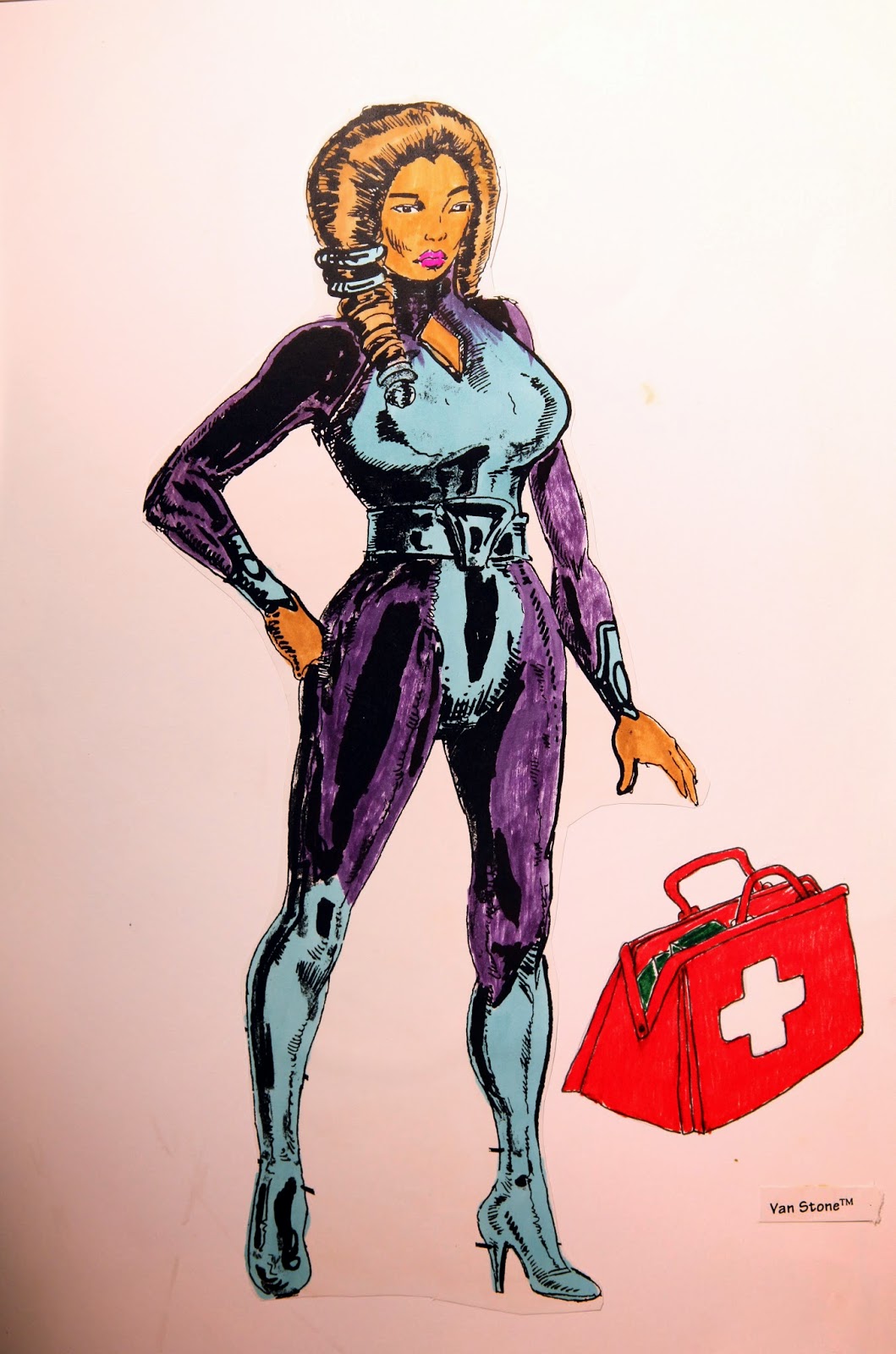Above: Diana, Wonder Woman, (DC Comics) who was always a Black Female Superhero but rarely drawn having dark skin complexion.
The reason why I am presenting Female characters in Superheroines comics is: Each model who wants to make it to the end of the model magazine cover competition developed by the Philadelphia Front Page News-Magazine MUST create a sexy pose as one of the famous “Significant” non-caricatured Black Female superheroes in comics history.
But let’s set the record straight about Black Female superheroes who are both from Africa and the other world continents. If their beginnings are from Africa and they somehow journey to America to fight super-evil, the Black woman doesn’t become African-American just because she visited the Americas.
Same goes for, if their beginnings are from America and they somehow journey to Africa to fight super-bad guys, the Black woman doesn’t become America-African just because she visited Africa, Asia, Europe or any of the other continents where Black females have beginnings.
The Women of Color, the person who is Black, has always been identified in parts of the world, not by skin complexion, but rather by historical genes. Therefore, if the people living in Africa, Asia, and certain parts of Europe located at the corners of Egypt, were Black where they all began they will not become something other than Black just because they all suddenly have an end in a completely different part of the world.
When it comes to women characters in comics, one of the most significant developed stories for a superheroine, which began in North Africa, is the story of Diana, Wonder Woman and her twin sister Nubia, Wonder Woman.
Another significant developed story for a superheroine is the story of an African-American Super woman
which began in New York City, New York.
But most people interested in superheroes and comics want to know who the first most significant non-caricatured Black female superhero is. So, I, Van Stone, will reveal the answer to you the reader.
The first most “significant” non-caricatured Black female superhero ever, introduced in 1940 DC Comics, is the Hawkgirl, an Egyptian, Eastern North Africa Princess (a Black Woman).
Diana, Wonder Woman, who is a Black female superhero, has to have one of the most enigmatic histories of any major comic book character. Why? Because, in 1941 DC Comics introduced the Wonder Woman, a Libyan, Eastern North Africa Princess (a Black Woman) who became the second most “significant” non-caricatured Black female superhero ever.
Wonder Woman’s background story has been changed, re-connected, tweaked, retold, re-imagined and re-envisioned over and over. But why has this occurred? This has happened because Wonder Woman is really based on a real life Black person- a Black woman.
And the same has happened with every creation story that actually has anything to do with being based on real life female or male historic Black peoples or people of Color. The fact is: The Old and New Testament Biblical Characters, The Great African, Greek, Asian, as well as, Southeastern African/European Poetry Writer Characters, and many of the First Explorers of Canada, North, South and Central Americas were all Black-gene peoples.
Still, it seems that there is a natural habit of all mankind for some un-established strange reason to observe any Black Histories and then afterwards steal or borrow them for another fake racial historic creation. The fake racial historic creations last forever without anyone bothering to expose what is false.
In fact, with the exception of the X-men's Storm and Rogue, Avengers’ Hawkgirl, America’s Spiritual Revenge’s Shi, Van Stone’s Heroes of the Last Q’s Shadai Chiropractra, Gotham’s Batgirl, and America’s Teen Ms Marvel, there are not any other widely recognized black superheroines in American culture.
But this is only because Diana, Wonder Woman’s true identification of being the Super-Black woman with a twin sister whose name is Nubia, Wonder Woman has been denied by both whites and blacks for years.
Because she is such a powerful female character, a strong and independent leader, and a frequently used and referenced character, Wonder Woman is simply just the most famous Black Female character in DC Comics. But Wonder Woman is not the number 1 Black Female Superhero.
From Van Stone’s countdown from number 17 superheroine to number 1 at the start of the year of the Black female super hero until now, the winner is: Her name is simply, Shi. Recall, Shi, a Woman of Color, who is Japanese-American, is a Black woman because of her historical genes.
Above: Shi. Shi is the Best Black Female Superheroine in all comics illustrations since 1940 through 2014.
Continuing
our celebration of the Black Woman Model on a Magazine Cover, before we start
the actual model competition, we wanted to conclude our view of professional
and amateur models by giving you a list of the Top 17 Black Female Characters
in Comics according to actual order of
geographic location and time periods: From Egypt, Eastern North Africa
is Hawkgirl; from Libya, Eastern North Africa is Wonder Woman (a twin sister of
Nubia, Wonder Woman); from Libya, Eastern North Africa is Nubia (a twin sister
of Diana, Wonder Woman) from Nicaragua, Central America is Namora; from
Iran-Ukraine-Turkey, Eastern Asia is Red Sonja; from New York City, New York,
African-America-USA, is Sun Girl; from Kenya,
East Africa is Storm; from the Greek Islands, Greece is Electra;
from Maimon,
Dominican Republic, is Zarda, Power Princess; from Mississippi, Native
America-USA, is Rogue; from New York, Japanese-American-USA is Shi; from Libya,
Eastern North Africa is Axegirl; from Philadelphia, PA, Black Hispanic-America-USA,
is Shadai Chiropractra; from Philadelphia, PA,
Black Indian-America-USA, is Yolanda; from Malaysia, Southeast Asia is Batgirl;
from Kenya, East Africa is Female Black Panther; from Pakistan, South Asia is
Ms Marvel
Wonder
Woman is a fictional superheroine who appears in comic books. The character is
a warrior princess of the Amazons (based on the Amazons of Greek mythology).
The Greeks who wrote this mythology were in fact Black peoples who lived in
North Africa, Asia, and Europe on the border of the corners of Egypt. Therefore,
Wonder Woman racially would be Black.
Hawkgirl (1st "Significant" Black Female Superhero)
Diana, Wonder Woman, twin sister of Nubia, Wonder Woman (2nd "Significant" Black Female Superhero)
Nubia, Wonder Woman, twin sister of Diana, Wonder Woman (3rd "Significant" Black Female Superhero)
Namora (4th "Significant" Black Female Superhero)
Red Sonja (5th "Significant" Black Female Superhero)
Sun Girl (6th "Significant" Black Female Superhero)
Storm (7th "Significant" Black Female Superhero)
Electra (8th "Significant" Black Female Superhero)
Zarda, Power Princess (9th "Significant" Black Female Superhero)
Rogue (10th "Significant" Black Female Superhero)
Shi (11th "Significant" Black Female Superhero)
Axegirl, Van Stone's Heroes of the Last Q at left (12th "Significant" Black Female Superhero)
Shadai Chiropractra, Van Stone's Heroes of the Last Q (13th "Significant" Black Female Superhero)
Yolanda, at top right and Shadai Chiropractra at bottom, Van Stone's Heroes of the Last Q (14th "Significant" Black Female Superhero)
Batgirl (15th "Significant" Black Female Superhero)
Female Black Panther (16th "Significant" Black Female Superhero)
Ms Marvel (17th "Significant" Black Female Superhero)
It seems that Hawkgirl, Wonder Woman, and Zarda, Power Princess are all equal in significant power, strength, liberation, fairness, loyalty, commitment, and sexy beauty in the eyes of a good man. And these women superheroes were only interested in the opposite sex, fixated on romance between the male and female sex caring about children and modern family. Men of any race or being, even Batman or the Black Panther, found the Black female superhero to be irresistible.








_from_Superior_Spider-Man_Team-Up_Vol_1_6.jpg)




















